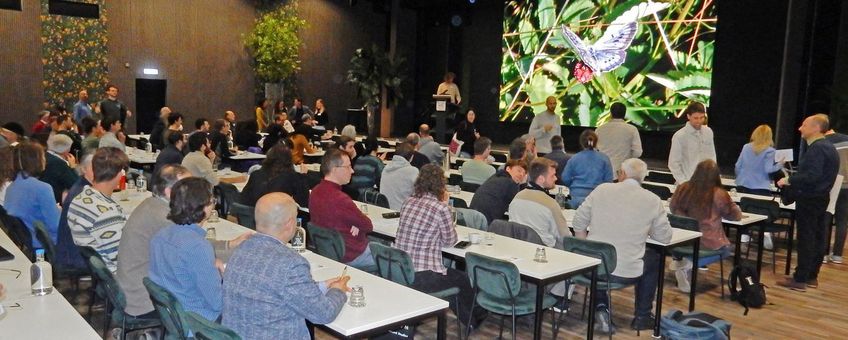
Congress on future for butterflies and moths gives boost for nature restoration
Dutch Butterfly ConservationFor the sixth time since 1989, Dutch Butterfly Conservation organized an international conference on the future of butterflies and moths. More than 160 participants from 28 countries gathered in Wageningen, the Netherlands, to share knowledge about ecology, population trends and the protection of butterflies. The focus was Europe, but other continents were also represented to benefit from the knowledge and experience gained in the European countries. During the congress, a wide variety of topics were covered, all of which are necessary to achieve effective protection. So not only ecology and monitoring, but also knowledge about genetics, effects of climate change, nitrogen deposition, light pollution and grazing management as well as the technical innovations with which we can also develop new ways of identifying and counting species.

Butterflies are showing declines in many parts of Europe. In the Netherlands, the butterfly population has more than halved since 1992 and across Europe, 30 percent of grassland butterflies have vanished in thirty years. Whereas in Northwest Europe the intensification of land use and urbanization are particularly threatening, elsewhere in Europe the abandonment of marginal agricultural land is a major problem. And on top of that, there is the growing influence of climate change, both of global warming and of increasing extremes of drought and wildfires or heavy rainfall and flooding. Rare species are facing increasing extinctions and only a small group of mobile and fast-growing species are able to benefit. As a result, the species composition of the butterfly community is becoming poorer and more uniform: many local specialists are disappearing and are being replaced by fewer generalist species that manage to survive everywhere.

The fact that we know all this is thanks to a close collaboration between researchers and a growing number of skilled volunteers who count butterflies according to fixed methods. The European monitoring network for butterflies now counts more than 6000 monitoring transects in 30 different countries. For moths, there is a great effort going on to catch up with these achievements. Counts are now taking place in more and more places with the help of light traps. And a European Red List for the 3178 species of macro-moths will be published later this year.
The European Nature Restoration Regulation that was adopted last year can give an important boost to the protection and recovery of butterflies and moths in the coming years. In addition to the broad restoration of ecosystems inside and outside protected areas, this regulation aims to ensure that the decline of wild pollinators, including both butterflies and moths, is reversed towards recovery by 2030. This poses a major challenge for nature restoration in agricultural areas. The European Grassland Butterfly Indicator provides an important tool to assess the trend of butterfly populations. With the help of all butterfly counters throughout Europe, we are thus able to monitor the road towards recovery. After all the reports showing declines and impoverishment of butterfly populations, that is a hopeful sign!
Text: Michiel Wallis de Vries, Dutch Butterfly Conservation
Photos: Kars Veling; José Kok

